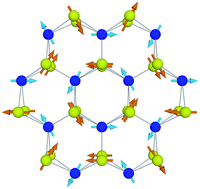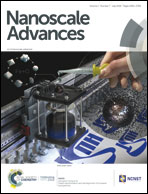Hyperfine interaction in atomically thin transition metal dichalcogenides†
Abstract
The spin dynamics of localized charge carriers is mainly driven by hyperfine interaction with nuclear spins. Here we develop a theory of hyperfine interaction in transition metal dichalcogenide monolayers. Using group representation theory and the tight binding model we derive effective Hamiltonians of the intervalley hyperfine interaction in the conduction and valence bands. The spin–valley locking and pronounced spin–orbit splitting lead to a specific form of hyperfine interaction, which we call “helical”. We also demonstrate that the hyperfine interaction is noncollinear for chalcogen atoms in the general case. At the same time in the upper valence band the hyperfine interaction is purely of the Ising type, which suggests that the spin–valley polarization of localized holes in transition metal dichalcogenide monolayers can be conserved for a particularly long time.



 Please wait while we load your content...
Please wait while we load your content...